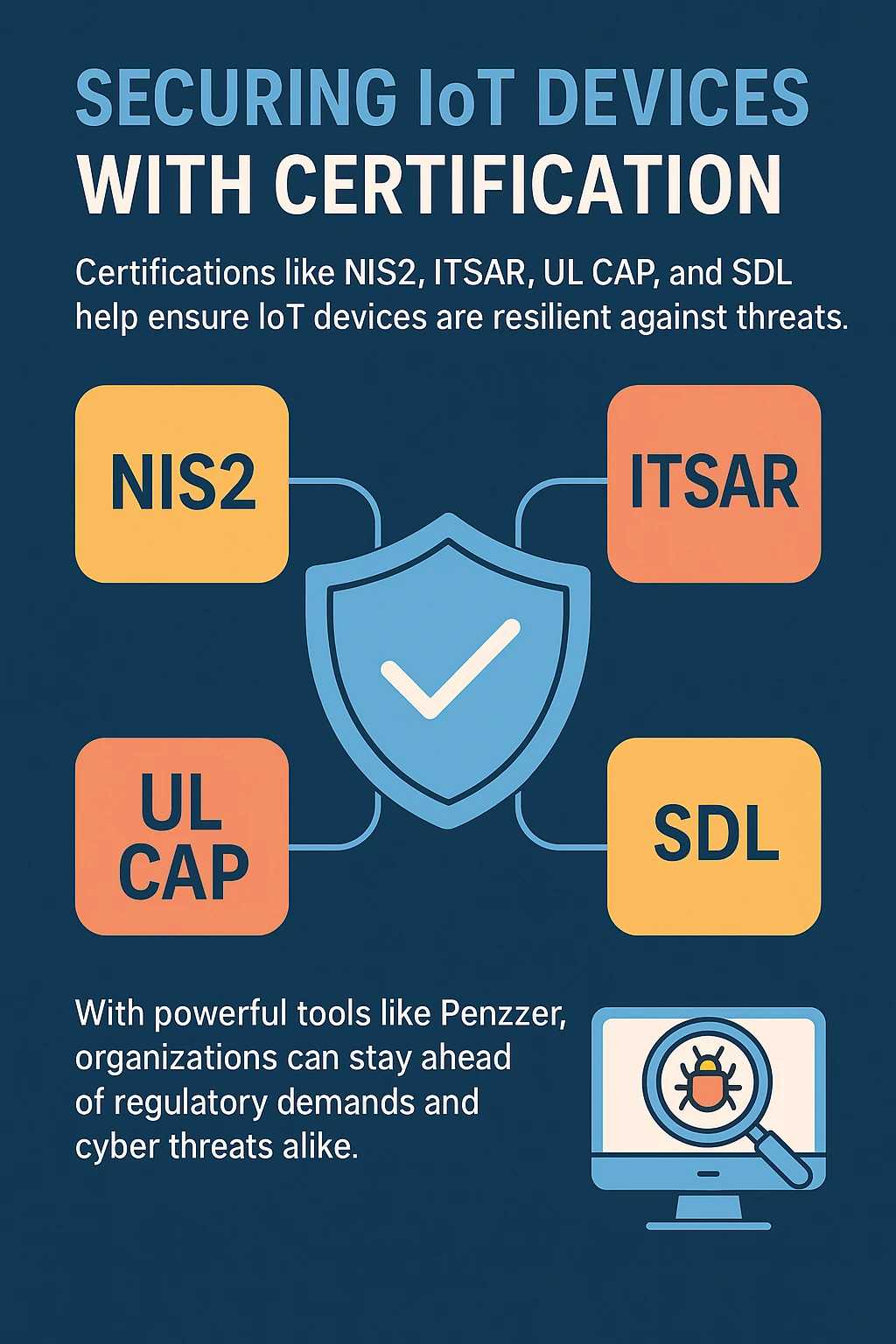WPA3 Security Testing
WPA3 security testing requires complex SAE and EAPOL analysis; Penzzer enables fuzzing by acting as a controllable WPA3 Access Point for devices.

As Internet of Things (IoT) devices become increasingly woven into the fabric of our daily lives and industrial operations, the importance of their security cannot be overstated. From smart thermostats and wearable fitness trackers to industrial sensors and connected medical devices, IoT devices collect and exchange vast amounts of data, often with minimal human intervention. While this connectivity fuels automation and efficiency, it also introduces new vulnerabilities and expands the attack surface for cyber threats.
IoT devices are physical objects enhanced with sensors, software, and network capabilities, enabling them to connect and communicate over the internet. Their applications span:
These devices typically function by collecting data through sensors, transmitting it over a network, and either storing it for analysis or using it to trigger automated actions.
The proliferation of IoT devices has amplified concerns about privacy, data integrity, and system security. Malicious actors can exploit insecure devices to infiltrate networks, steal data, or disrupt critical infrastructure. Recognizing these risks, governments and standards bodies worldwide have introduced security certification frameworks to ensure that IoT devices meet baseline cybersecurity requirements.
The EU's Network and Information Systems Directive 2 (NIS2) is a comprehensive regulatory framework aimed at strengthening cybersecurity across member states. It expands upon the original NIS directive by:
NIS2 enforces shared responsibility among manufacturers, service providers, and end-users, promoting a holistic approach to IoT security.
India's Indian Telecom Security Assurance Requirements (ITSAR), under the Mandatory Testing and Certification of Telecommunication Equipment (MTCTE) framework, are developed by the National Centre for Communication Security (NCCS). They aim to:
Compliance is verified through testing by certified labs, reinforcing India's commitment to secure telecom infrastructure.
The UL Cybersecurity Assurance Program (UL CAP), developed by UL Solutions, provides certification for network-connectable products, particularly in IoT. It is based on the UL 2900 series of standards and focuses on:
UL CAP not only evaluates devices but also examines vendor processes to foster long-term security resilience.
Though not a government mandate, Microsoft’s Security Development Lifecycle (SDL) is widely regarded as a best practice for secure software development, including IoT. It encompasses:
Complementing SDL, Microsoft’s Azure IoT and Defender for IoT platforms provide comprehensive security for connected environments.
Navigating the complex landscape of IoT security certifications can be daunting for organizations, especially as they face growing regulatory scrutiny and increasingly sophisticated cyber threats. This is where Penzzer makes a significant impact.
Penzzer is a modern fuzzing solution designed to automate and streamline vulnerability discovery across IoT devices and their ecosystems. It enables manufacturers and developers to identify and remediate security flaws before deployment, helping them align with certification requirements like those outlined in NIS2, ITSAR, UL CAP, and SDL.
By integrating Penzzer into their development and compliance processes, organizations can dramatically reduce the time and cost associated with achieving security certifications. More importantly, they can ensure their IoT devices are resilient, trustworthy, and future-ready.

Identify security flaws before attackers do, automatically and at scale with Penzzer's intelligent fuzzing engine.
